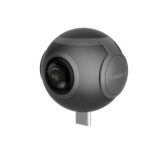Electronic devices usage has grown across almost all aspects of our daily lives. Today, how we work, acquire knowledge, and entertain ourselves is highly dependent on electronic devices, such as televisions, tablets, laptops, and mobile phones. A survey of the American people conducted by Statista found that as of 2025, 97.7% of respondents owned a smartphone, while 48.6% owned a tablet.
This new shift in our lifestyles is fueled by multiple factors; the primary ones being the widespread availability of internet options like cable, fiber, mobile plans, and satellite internet, offering a wide range of affordable, feature-rich devices available on the market for consumers.
The rise in the use of electronic devices has no doubt brought a lot of benefits for people; however, it packs a fair share of risks that could impact the mental health of individuals. There have been studies that show a direct link between increased screen time and mental health disorders like anxiety and depression.
All of these factors make mindful technology use a crucial practice to find the right balance between screen time and mental health, and how you can do that is what this article will explore.
Together, we will take a deep dive into the following aspects:
Screen Time and Mental Health – Why It’s a Love-Hate Relationship
The nature of the relationship between excessive screen time and mental health can be perfectly described as a love-hate relationship. Excessive screen time has long-lasting physical and mental health impacts on both adults and younger people; however, the effects are more critical among younger generations.
Screen time spent using social media, watching movies or shows, or simply scrolling releases dopamine, which can make it highly addictive and lead people to ignore the risks it packs. Some of the most common risks include the negative effects of blue light on sleep schedules, the twisted relationship between social media and mental health, and even difficulty in maintaining a work-life balance in a digital world.
Let’s explore each of these aspects in more detail.
The Effects of Blue Light on Sleep Schedules
In simple words, blue light refers to the wavelength of light that the electronic devices we use emit. This light has different effects on us during the day and the night. During the day, it can boost our alertness, reaction times, and alleviate our mood. However, it has considerably alarming impacts on us during the night, particularly on our sleep.
Unfortunately, more than 90% of American people use devices an hour before their bedtime without realizing how this can impact their ability to enjoy quality sleep. To effectively regulate our waking up and sleeping schedule, the body releases a hormone called Melatonin. This hormone is responsible for developing our natural circadian rhythm, which is basically our internal clock.
The hormone does so by ensuring we sleep timely, through making us feel drowsy and preparing our bodies to rest. When we use electronic devices before sleeping, the blue light emitted from them suppresses the production of this hormone and activates our brain, both of which disrupt our natural cycle of sleeping and waking up that we develop over the years. This results in difficulty going to sleep, staying asleep, and feeling fresh and energetic when we wake up.
The Twisted Relationship Between Social Media and Mental Health
Social media is a great way to connect with our friends, entertain ourselves, and even catch our news. That being said, there are also multiple downsides associated with excessively using social media. In fact, multiple studies have identified a direct link between overusing social media and mental health issues. However, in America, establishing a social media presence has become the new cool, and multiple studies indicate that both adults and children are now overusing social media.
When it comes to adults, statistics indicate that 7 in 10 American adults use social media, with 49% of them admitting to using it daily. On the other hand, when it comes to younger people, a survey of American teens between 13 and 17 conducted by the Pew Research Center in 2024 highlighted that a majority of them own a smartphone and constantly use social media, with 46% of them saying they’re online all the time.
This excessive usage of social media by both generations exposes them to a literal ocean of content, which can include exaggerated, inaccurate, and unachievable displays of lifestyles, beauty and fitness standards, and personal achievements. This exposure creates a sense of comparison, competition, and pressure to keep up.
Additionally, the anonymity element in social media platforms also enables cyberbullies to harass and abuse others. All these elements can result in negative feelings and behaviors that eventually give rise to mental health issues like anxiety, depression, and even suicidal thoughts.
The impacts of excessive screen time are not only limited to negatively impacting our sleep schedules and our perceptions of reality. They can also impact our ability to achieve a work-life balance in a digital world. The next section explores how more screen time leads to a poor work-life balance and further creates a rift between excessive screen time and mental health.
How Excessive Screen Time Prevents Achieving a Work-Life Balance in a Digital World
The way we work in the office has seen a huge shift, transforming from manual means to digital means for planning, communicating, and even executing some of our strategies. Additionally, there are also newer work models that have risen in recent years, with remote work being a prime example.
However, remote work is also highly dependent on digital platforms and electronic devices. While these digital means offer a way to organize, automate, and work flexibly, they also come with a risk: more screen time.
Think about it, what’s the first thing you do when you get bored in the office or even while working from home? You pick up your phone and scroll through social media, or you take a short break to watch a movie or show. In fact, according to a study, people spend close to 56 minutes using their phones at work. While you may think of this as a way of relaxation, it only adds to the already high screen time you spend performing work-related tasks on other devices, such as desktops or laptops.
Additionally, it can result in divided focus that hinders your ability to concentrate on tasks at hand, reduces productivity, and increases stress.
Beyond personal usage, even work-related screen time can be a major cause of mental health issues. For example, I remember a job I was working that allowed us to work from home during COVID. The only catch? We had to work 12-hour shifts six days a week. Let’s just say that eventually the stress and anxiety of being constantly available got so bad that I had to put myself first and make the decision to leave.
Unfortunately, the always-on nature of digital tools has resulted in employers expecting employees to be available beyond work hours. This has resulted in more screen time and reduced the ability to address personal concerns, resulting in stress and anxiety among workers everywhere.
The 3 critical concerns I shared make it necessary for people of all ages to practice mindful technology use for establishing a healthy balance between screen time and mental health. The next section is going to explore how mindful technology use can greatly improve your mental health.
The Benefits of Mindful Technology Use for Your Mental Health
There is a world beyond your screen, the real one, and trust me, it is filled with beautiful souls, sights, and experiences waiting for you to embrace them. Through mindful technology use, you can unleash a plethora of benefits for your mental well-being. Below are some of the reasons your brain will thank you after setting screen time limits:
Reduces Anxiety and Stress
The long hours you spend browsing information through social media, watching movies or shows, and even working can take its toll in the form of stress, anxiety, and depression. Taking a break from this information overload can help you find peace and calm.
Enhancing Focus and Self-Esteem
The constant notifications and messages on our devices serve as major distractions that impact our ability to focus. By avoiding the temptation to constantly check, you can enhance your focus, which can in turn improve your productivity and sense of self-esteem.
Instilling Positive Emotions
A constant peek into the inaccurate lives and standards on social media can result in you comparing yourself with them, and harboring negative feelings like loneliness, resentment, jealousy, and underachievement. Taking a break from these platforms can help you identify and appreciate the positive parts of your life.
Considering these benefits, who wouldn’t want a piece of them? The best part is that it’s easier than you think. With just a few simple screen time management tips, you can overcome the impact of excessive screen time on your mental health and embrace a more well-balanced and healthier lifestyle. The next section will explore these tips.
5 Simple and Effective Screen Time Management Tips
The screen time management tips I’m about to share are simple, effective, and practical. They cater to a diverse range of lifestyles, and all they require is a strong will. Let’s dive right into them!
Setting Screen Time Limits
Setting screen-free time limits is one of the most effective ways to balance screen time and mental health. It allows you to identify and act on other potentially healthier activities, such as going for a walk, spending time with your family, meeting a friend, or literally anything else that you want to do.
You can do this by turning your phone off or silencing notifications during the time frame you choose. Try to choose a time frame in which you’re free so you can pursue other interests.
Setting Screen Free Zones
If you prevent yourself from using electronic devices in specific parts of your home, you can greatly see the positive effects on your creativity and overall mental health. Your bedroom should definitely be on this list, as this takes care of the blue light situation, helps you regulate your sleep schedule, and increases the level of energy you wake up with.
Preventing Usage During Meals
The urge to watch a movie or show while eating is something that we all experience and often succumb to. However, preventing the use of electronic devices during dinner can help both singles and families. Both sides can take a moment to unwind from the stress of everyday life, share experiences, and connect with themselves or loved ones.
Preventing Usage When with Others
Let’s face it, life can get stressful, and internalizing or staying in your own world is only going to make it worse for you. The solution? Connecting with others like your friends and family, free of distractions like your phone. Let’s say you met a friend after a long time, both of you are stressed from the duties of work and family, and the only thing you both did was use your phones. Trust me, you’re both going back with those stresses. However, without your phones, you could have shared your experiences, laughed, guided each other, and reduced that stress.
Limiting Your Usage to One Device at a Time
Have you ever found yourself using your phone in the middle of a movie or news report? This action may seem like nothing, but it impacts your ability to focus on the task at hand. By resisting the urge to divert your attention to multiple electronic devices at a time, you can enhance your focus. Doing so will help you across all aspects of life, from personal development to work-related tasks
Balancing Screen Time and Mental Health – Embracing New Experiences and Outlooks on Life
Being unable to find a balance between screen time and mental health is leading to increased mental health issues among Americans, particularly young adults.
They say a journey of a thousand miles begins with a single step, and practicing mindful technology use to find a balance between screen time and mental health is that step.
By setting screen time limits, screen-free zones, and connecting with the real world, people all over America can reduce the impact of mental health issues on their lives.
Start this improvement journey now, and it is only a matter of time before newer experiences come your way and change your outlook on life.










